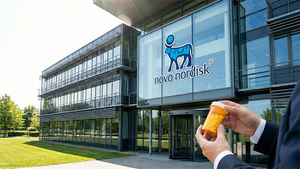Hypoimmune human islet cells normalized glucose in diabetic humanized immunocompetent mouse model and avoided allogeneic and autoimmune rejection by the immune system
Similar hypoimmune primary human islet cells to be tested in patients with type 1 diabetes as part of an investigator-sponsored trial expected to initiate with data readout later this year
Provides insight for SC451, Sana’s hypoimmune PSC-derived pancreatic islet cell therapy, in development for the treatment of type 1 diabetes
Goal to file IND for SC451 in 2024
SEATTLE, April 12, 2023 (GLOBE NEWSWIRE) -- Sana Biotechnology, Inc. (NASDAQ: SANA), a company focused on changing the possible for patients through engineered cells, today announced that Science Translational Medicine has published a paper titled “Human hypoimmune primary pancreatic islets avoid rejection and autoimmunity and alleviate diabetes in allogeneic humanized mice.” The paper details data from a series of ten in vivo experiments demonstrating the insulin-normalization activity, persistence, immune evasion, and lack of immunogenicity of human hypoimmune-modified islet cells, which cluster into effective endocrine organoids termed “pseudo islets.”
“The replacement of defective or missing cells has been the goal for many diseases; however, immune rejection results in either systemic immunosuppression or therapeutic failure. Sana’s proprietary hypoimmune platform was developed to solve this problem,” said Steve Harr, Sana’s President and CEO. “The Science Translational Medicine paper details data demonstrating that hypoimmune pseudo islets developed with our hypoimmune technology survived and were able to reverse diabetes without any immunosuppression in humanized mice. Eliminating the need for insulin administration and reversing diabetes with normalization of blood glucose levels, and doing this without immunosuppression, would be a transformational advance for patients. Insights from this research along with an expected investigator-sponsored trial this year will inform the development plan for our SC451 product candidate in type 1 diabetes as we move forward with our goal of submitting an IND in 2024.”
HIP Pancreatic Islet Cells Survive, Persist, and Escape Allogeneic Rejection
Sana generated human hypoimmune (HIP) pseudo islets (p-islets) and wild-type (wt) p-islets that were similar in size, cell type composition, and in vitro insulin secretion. The survival of the p-islets and their cell composition was assessed in immunocompetent, diabetic allogeneic humanized NSG-SGM3 mice. HIP or wt p-islet clusters were injected into the hindlimb muscle and were recovered on the same day or 7 or 28 days later. Wt p-islets could only be recovered on the same day and were fully rejected and dissolved at later time points. By contrast, the total cell count and cell composition of HIP islets did not change over time.
In another experiment, analyses were conducted a month following exposure to HIP and wt p-islets. There were no traces of wt p-islet grafts found in any animals after one month. Recovered splenocytes and serum from the wt p-islet treated animals showed markedly activated T cells (analyzed by ELISPOT) and donor-specific antibodies (analyzed by flow cytometry) against the grafts in the wt p-islet group, demonstrating a strong adaptive allogeneic immune response. By contrast, HIP p-islets showed the same morphology as before transplantation and contained alpha, beta, and delta cells. No immune cell infiltrate was observed in or around the HIP p-islet cells. Additionally, no adaptive allogeneic immune response was observed in humanized mice that received HIP p-islets and diabetes in these mice was alleviated. Confirmatory killing assays showed killing of wt p-islets and no killing of HIP p-islets.
HIP Islet Cells Control Insulin Similarly to Unedited Wild-Type Islet Cells in Immunodeficient Mice
The ability to control diabetes was assessed in immunodeficient NSG mice to remove the variable of immune rejection of allogeneic cells, enabling the comparison of wt and HIP p-islets. Diabetes was induced using streptozotocin (STZ) and all mice had fasting glucose concentrations >400 mg/dl on the day of p-islet graft transplantation. Wt and HIP p-islets both achieved glycemic control within approximately 2 weeks and generated similar c-peptide concentrations one months after transplantation. These functional data confirmed that HIP p-islet cells maintained endocrine function comparable to wt p-islets and showed unimpaired resilience toward the transplantation procedure.
HIP Islet Cells Ameliorate Diabetes in Models of Autoimmunity: NOD Mice as well as Humanized Autoimmune Mice
The ability of HIP islet cells to avoid autoimmunity was assessed in two different models. The first set of experiments were in the NOD mouse, which is the primary animal model for studying autoimmunity in diabetes due to the similarities to the human disease. These studies demonstrate that mouse HIP p-islets survive while syngeneic p-islets are rejected due to autoimmune killing. Additionally, the impact of autoimmunity was studied in a humanized, diabetic autoimmune mouse. To generate a humanized, autoimmune mouse, immune cells and iPSCs were generated from PBMCs collected from a person with type 1 diabetes (T1D). Mice were engrafted with the T1D immune cells and diabetes was induced. The iPSCs were then either hypoimmune-modified or mock-modified, differentiated into islet cells, and transplanted into these immunocompetent, diabetic humanized mice to study autoimmunity in vivo. All HIP iPSC-derived p-islets survived and glycemic control was achieved in all recipients of HIP iPSC-derived p-islets. In contrast, all autologous, mock-modified iPSC-derived p-islets were fully rejected within 10 days due to autoimmunity and showed no effect on blood glucose, even temporarily, and animals had no detectable c-peptide after one month.
About Sana’s Hypoimmune Platform
Sana’s hypoimmune platform is designed to create cells ex vivo that can “hide” from the patient’s immune system to enable the transplant of allogeneic cells without the need for immunosuppression. We are applying hypoimmune technology to both donor-derived allogeneic T cells, with the goal of making potent and persistent CAR T cells at scale, and pluripotent stem cells, which can then be differentiated into multiple cell types at scale. Preclinical data from a variety of cell types demonstrate that these transplanted allogeneic cells can evade both the innate and adaptive arms of the immune system while retaining their function. Our most advanced programs using hypoimmune technology include our allogeneic CAR T program targeting CD19+ cancers, our allogeneic CAR T program targeting CD22+ cancers, our allogeneic CAR T program targeting BCMA+ cancers, and our stem-cell derived pancreatic islet cell program for patients with type 1 diabetes.
About Sana Biotechnology
Sana Biotechnology, Inc. is focused on creating and delivering engineered cells as medicines for patients. We share a vision of repairing and controlling genes, replacing missing or damaged cells, and making our therapies broadly available to patients. We are a passionate group of people working together to create an enduring company that changes how the world treats disease. Sana has operations in Seattle, Cambridge, South San Francisco, and Rochester. For more information about Sana Biotechnology, please visit https://sana.com/.
Cautionary Note Regarding Forward-Looking Statements
This press release contains forward-looking statements about Sana Biotechnology, Inc. (the “Company,” “we,” “us,” or “our”) within the meaning of the federal securities laws, including those related to the company’s vision, progress, and business plans; expectations for its development programs, product candidates, and technology platforms, including its pre-clinical, clinical, and regulatory development plans and timing expectations, including the expected timing of IND submissions for the Company’s product candidates and indications for which the Company is developing its product candidates and for which such INDs will be submitted, and expected impact of data from pre-clinical studies of cells made using hypoimmune technology and from an investigator-sponsored trial using hypoimmune primary human islet cells in patients with type 1 diabetes (the “IST”), including the potential of pre-clinical data and the IST to provide insight that will inform development of its SC451 product candidate; expectations regarding the IST, including the ability to initiate the IST and expected timing, substance, and availability of data therefrom; the potential ability of the hypoimmune platform to create cells ex vivo that can “hide” from the patient’s immune system to enable the transplant of allogeneic cells without the need for immunosuppression, and the potential benefits associated therewith; and the potential ability to make potent and persistent CAR T cells at scale and of hypoimmune pluripotent stem cells to differentiate into multiple cell types at scale. All statements other than statements of historical facts contained in this press release, including, among others, statements regarding the Company’s strategy, expectations, cash runway and future financial condition, future operations, and prospects, are forward-looking statements. In some cases, you can identify forward-looking statements by terminology such as “aim,” “anticipate,” “assume,” “believe,” “contemplate,” “continue,” “could,” “design,” “due,” “estimate,” “expect,” “goal,” “intend,” “may,” “objective,” “plan,” “positioned,” “potential,” “predict,” “seek,” “should,” “target,” “will,” “would” and other similar expressions that are predictions of or indicate future events and future trends, or the negative of these terms or other comparable terminology. The Company has based these forward-looking statements largely on its current expectations, estimates, forecasts and projections about future events and financial trends that it believes may affect its financial condition, results of operations, business strategy and financial needs. In light of the significant uncertainties in these forward-looking statements, you should not rely upon forward-looking statements as predictions of future events. These statements are subject to risks and uncertainties that could cause the actual results to vary materially, including, among others, the risks inherent in drug development such as those associated with the initiation, cost, timing, progress and results of the Company’s current and future research and development programs, preclinical and clinical trials, as well as the economic, market and social disruptions due to the ongoing COVID-19 public health crisis. For a detailed discussion of the risk factors that could affect the Company’s actual results, please refer to the risk factors identified in the Company’s Securities and Exchange Commission (SEC) reports, including but not limited to its Annual Report on Form 10-K dated March 16, 2023. Except as required by law, the Company undertakes no obligation to update publicly any forward-looking statements for any reason.
Investor Relations & Media:
Nicole Keith
investor.relations@sana.com
media@sana.com






